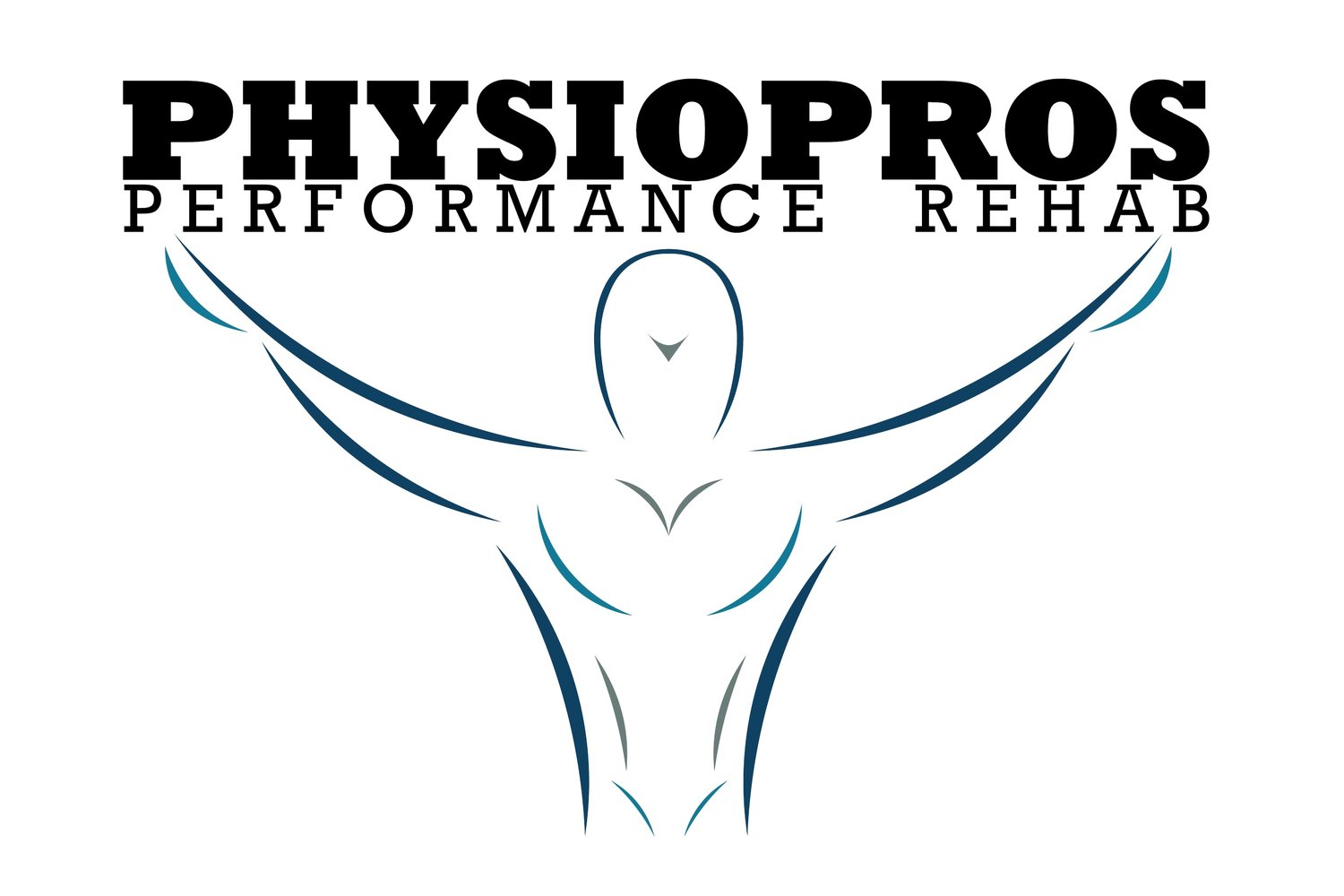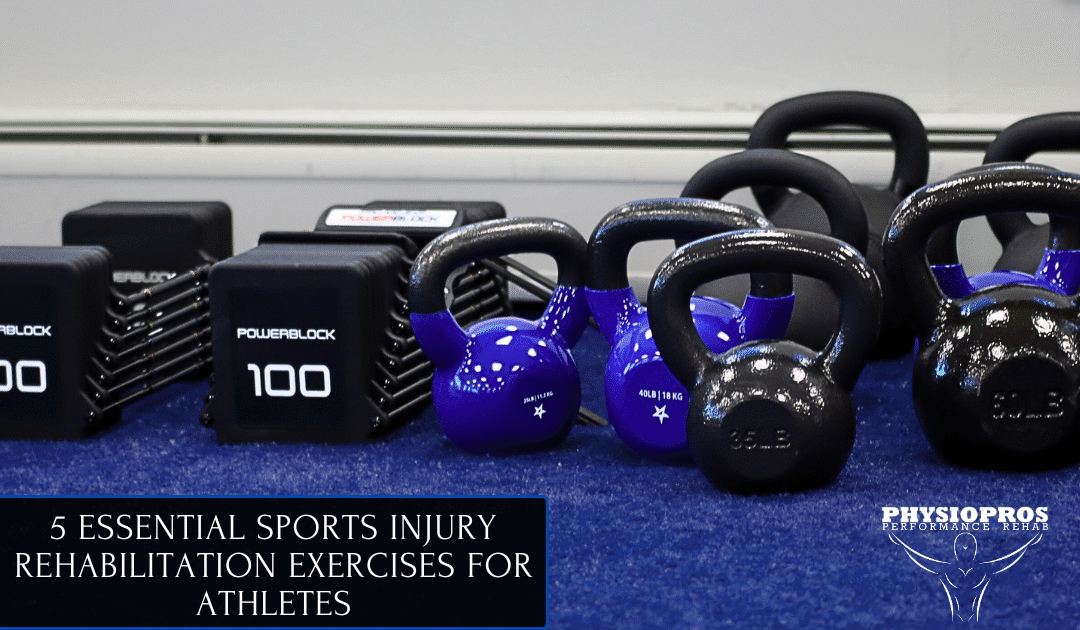5 Essential Sports Injury Rehabilitation Exercises for Athletes.
Audio Version:
Ever tweaked your knee in the middle of a big play? At Physiopros Performance Rehab in Parsippany, NJ, we know that getting back on the field quickly—and safely—is your top priority. That’s why we’ve developed five essential Sports Injury Rehabilitation exercises that tackle everything from ankle sprains to shoulder strains. First, you’ll learn how each move rebuilds strength without risking re-injury. Then, we’ll guide you through step-by-step instructions so you can start your recovery with confidence. Whether you’re a professional athlete or an amateur, these exercises will help you regain mobility, boost stability, and prevent future setbacks. Let’s dive in and get you back to peak performance!
Exercise #1: Dead Bugs
Dead bugs are a foundational core-stabilization move in sports injury rehabilitation, perfect for athletes recovering from lower-back or hip injuries. At Physiopros Performance Rehab in Parsippany, NJ, we use dead bugs early in rehab to rebuild deep core control without loading the spine.
Why it helps:
First, it reinforces coordinated activation of your transverse abdominis and pelvic floor.
Next, it teaches your core to brace while your arms and legs move—a key for preventing compensations during sports.
How to do it (step-by-step):
Lie on your back on a mat with your arms straight up toward the ceiling and hips/knees bent at 90°.
Engage your core by pressing your lower back gently into the mat.
Slowly extend your right leg toward the floor while you simultaneously lower your left arm overhead—keep both a few inches off the ground.
Pause for 1–2 seconds at end range, maintaining that gentle pressure in your low back.
Return your arm and leg to the starting position with control.
Repeat on the opposite side (left leg with right arm) for one rep.
Reps & Sets:
Beginners: 2 sets of 6–8 reps per side
Intermediate: 3 sets of 10–12 reps per side
Advanced: 4 sets of 15 reps per side, holding the extension for 3 seconds
Common mistakes to avoid:
Letting your lower back arch. Keep it pressed into the mat to protect your spine.
Rushing the movement. Move slowly and with control to maximize core engagement.
Lifting head and neck. Keep your head relaxed on the mat—only your limbs should move.
Next, we’ll move on to resistance-band shoulder external rotations to shore up your upper-body stability.
Exercise #2: Resistance-Band Shoulder External Rotations
Resistance-band shoulder external rotations are a go-to move in sports injury rehabilitation to rebuild rotator cuff strength and stability. At Physiopros Performance Rehab in Parsippany, NJ, we often add this exercise early for anyone recovering from shoulder sprains or impingement.
Why it helps:
First, it targets your infraspinatus and teres minor—key muscles for keeping your shoulder safe during throwing and overhead movements.
Next, it restores balanced shoulder mechanics, which prevents compensations that could lead to future injuries.
How to do it (step-by-step):
Anchor a light resistance band at waist height—use a stable pole or door anchor.
Stand sideways to the anchor point with your injured arm furthest from it.
Hold the band in that hand, elbow bent at 90° and tucked into your side.
Keep your wrist neutral and forearm across your belly.
Rotate your forearm outward, pulling the band until your hand lines up with your torso—don’t let your elbow flare out.
Pause for 1–2 seconds, then return slowly to the start.
Reps & Sets:
Beginners: 2 sets of 10 reps per side
Intermediate: 3 sets of 12–15 reps per side
Advanced: 4 sets of 20 reps per side, using a medium-resistance band
Common mistakes to avoid:
Allowing the elbow to drift forward. Keep it pinned to your side to isolate the rotator cuff.
Using too much resistance. Start light—sharp shoulder pain is a sign to dial back.
Rushing the return. Control both the outward and inward phases for maximum benefit.
Up next, we’ll strengthen your posterior chain with hamstring curls on an exercise ball—so you’ll stay balanced from head to toe.
Exercise #3: Hamstring Curls on an Exercise Ball
Next up in your sports injury rehabilitation plan is hamstring curls on an exercise ball—a fantastic way to rebuild posterior-chain strength and knee control. At Physiopros, we introduce this move once you’ve mastered basic stability, because it challenges both your hamstrings and core to work together.
Why it helps:
First, it targets your hamstrings and glutes, which are crucial for decelerating the leg during running or cutting.
Then, it forces your core to brace as you balance on an unstable surface, improving overall movement coordination.
How to do it (step-by-step):
Lie face-up on a mat with your heels and calves resting on top of a stability ball.
Lift your hips until your body forms a straight line from shoulders to heels—engage your glutes and core.
Bend your knees, rolling the ball toward your glutes by driving through your heels.
Pause for 1–2 seconds when your heels are close to your buttocks.
Extend your legs slowly, rolling the ball back to the start with control.
Keep your hips lifted the entire time—don’t let them sag.
Reps & Sets:
Beginners: 2 sets of 8–10 reps
Intermediate: 3 sets of 12–15 reps
Advanced: 4 sets of 20 reps, adding a 3-second hold at peak flexion
Common mistakes to avoid:
Dropping the hips. Maintain a straight line from shoulders to heels to keep tension in your hamstrings.
Pushing through your toes. Drive with your heels to emphasize the hamstrings.
Rushing the roll-out. Control the return phase to maximize muscle engagement and protect your knee.
Up next, we’ll focus on calf raises to strengthen your lower leg and Achilles tendon—so you can stay explosive off the ground.
Exercise #4: Calf Raises
Calf raises are a simple yet powerful move in sports injury rehabilitation, especially for athletes dealing with Achilles tendon issues or ankle instability. At Physiopros in Parsippany, NJ, we often add this exercise once basic lower-leg strength returns, because it helps you regain explosive power for sprinting and jumping.
Why it helps:
First, it loads the gastrocnemius and soleus muscles to rebuild calf strength.
Next, it stresses the Achilles tendon just enough to promote tendon health without overloading it.
How to do it (step-by-step):
Stand tall with feet hip-width apart, near a wall or sturdy chair for balance.
Shift your weight onto the balls of your feet, keeping your heels off the ground.
Lift up as high as you can onto your toes, squeezing your calves at the top.
Hold for 1–2 seconds, then slowly lower your heels back down until you feel a gentle stretch.
Repeat for the prescribed reps, and then switch to single-leg raises for an added challenge.
Reps & Sets:
Beginners: 2 sets of 12 reps with both feet
Intermediate: 3 sets of 15 reps, alternating 10 single-leg raises per side
Advanced: 4 sets of 20 single-leg raises, adding a 2-second hold at the top
Common mistakes to avoid:
Bouncing at the bottom. Lower with control to protect your Achilles tendon.
Leaning forward. Keep your torso upright to focus work on the calves.
Using momentum. Slow, deliberate reps maximize muscle activation.
Up next, we’ll finish strong with glute bridges to lock in hip stability and core support—so you can push your performance to the next level.
Exercise #5: Glute Bridges
Glute bridges are a cornerstone of sports injury rehabilitation, targeting hip extension and core stability—key for sprinting, jumping, and change-of-direction moves. We will wrap up our five-exercise series with this move to cement hip strength and protect your low back.
Why it helps:
First, it activates your gluteus maximus and hamstrings, which power your hips in almost every athletic movement.
Next, it reinforces your core and low-back muscles by teaching them to co-contract as you extend the hips, reducing compensation patterns.
How to do it (step-by-step):
Lie on your back with knees bent, feet flat on the floor hip-width apart, and arms resting at your sides.
Engage your core by drawing your belly button gently toward your spine.
Press through your heels and lift your hips toward the ceiling, squeezing your glutes at the top so your body forms a straight line from shoulders to knees.
Hold for 2 seconds, maintaining tension in your glutes and keeping your ribs down.
Lower your hips slowly back to the mat without relaxing fully.
Repeat for the prescribed reps.
Reps & Sets:
Beginners: 2 sets of 10 reps, holding 1 second at the top
Intermediate: 3 sets of 15 reps, holding 2 seconds at the top
Advanced: 4 sets of 20 reps, progressing to single-leg bridges or adding a resistance band above the knees
Common mistakes to avoid:
Overarching the low back. Keep your ribs down and drive through the heels, not the lower spine.
Letting knees cave in. Push your knees outward slightly or use a mini-band to teach proper hip alignment.
Dropping too fast. Lower with control to maintain muscle engagement and protect the joints.
Once you’ve nailed glute bridges, move on to our sample weekly routine to integrate all five sports injury rehabilitation exercises into your comeback plan!
FAQ: Sports Injury Rehabilitation
Q: How soon after an injury can I start sports injury rehabilitation?
Generally, you can begin gentle rehab exercises—like dead bugs—within 24–72 hours after the initial pain and swelling subside. However, always check with your Physical Therapist at Physiopros Performance Rehab in Parsippany, NJ before starting any movement.
Q: Will these exercises make my pain worse at first?
Mild discomfort or muscle “burn” is normal, but sharp or shooting pain isn’t. If you feel that, stop immediately and rest. Then reach out to our Parsippany clinic so we can adjust your plan or technique.
Q: How long before I notice improvements?
With consistent work—about 3–4 times per week—most athletes start seeing better mobility and less pain within 2–4 weeks. Remember, everyone’s body heals at its own pace, so celebrate small gains.
Q: Can I do all five exercises every single day?
It’s best to alternate intense days with active-recovery or mobility-focused sessions. For example, do resistance-band rotations and glute bridges one day, then follow up with light cardio or stretching the next. This helps prevent overload and promotes steady progress.
Q: What equipment do I need for sports injury rehabilitation at home?
You only need a few basics:
A light resistance band
An exercise ball or stability ball
A yoga or exercise mat
No fancy machines required—just space to move safely and a little consistency!
In Conclusion
You’ve just tackled five core moves—dead bugs, resistance-band shoulder external rotations, hamstring curls on an exercise ball, calf raises, and glute bridges—that form the backbone of effective sports injury rehabilitation. By rebuilding strength, improving stability, and restoring range of motion, you’re setting yourself up for a faster, safer return to peak performance.
Ready to take the next step? Book a one-on-one assessment at Physiopros Performance Rehab in Parsippany, NJ, and let our expert team customize a rehab plan tailored to your sport and goals. Plus, follow our blog for more pro tips on injury prevention, recovery strategies, and performance enhancement.
Stay consistent, listen to your body, and remember: great rehab today means stronger, pain-free plays tomorrow. Let’s get you back in the game! Visit our website at physioprospt.com or call us at (973) 265-8621, our experienced therapists are dedicated to helping you stay healthy, strong, and mobile. Finally, be sure to follow us on our social media accounts here: Instagram, Facebook, and TikTok.

